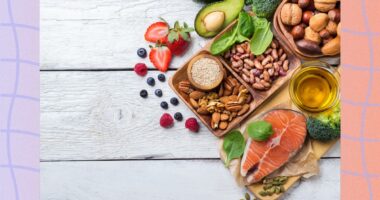
What Should You Look For In Food Labels?
(1) Product dates:
• “Sell by” date indicates before how long the store should sell a particular product like milk, poultry, eggs, chicken. These items are perishable and should be sold before the stipulated time.
• “Use by” date indicates that the product should be used or consumed before this particular date to avoid the food getting stale.
(2) Ingredient list:
• Ingredients are required to be listed in the descending order of weight. The ingredient listed first is used in the largest quantity in making the food product and so on.
(3) Nutrition facts label:
• The nutrition facts of the product are usually based on a 100 gms serving as well as one serving per individual. This provides information about sugar, proteins, fats, carbohydrates, the oil used, sodium content and so on.
(4) Daily value:
• Daily value is the amount of nutrient in the product and how much it meets the RDA or the per cent daily value of a fixed calorie diet.
The issues faced by the consumers in reading and understanding food labels are difficult terminology, small font size and inability to understand labels. One needs to be aware of the clever marketing that food companies use to make us believe the product is healthy.

Mentioned below are some labels that we should look out for when choosing a product.
1. Sugar: There are a lot of synonyms used for camouflaging the sugar content of a food product. Mentioned below are the different names of sugar. It is best to avoid these or have them in a minimal quantity. A product that says “NO ADDED SUGAR” but is still sweet will have fruit sugars, artificial sweeteners or honey as the sweet ingredient in it. These are still harmful to health. Some breakfast cereals contain as much as five teaspoons of sugar per serving.
READ RELATED: Are Oranges Good For Diabetics?
These are some of the sweet ingredients added to packaged foods:
- Agave nectar
- Brown sugar
- Cane crystals
- Cane juice
- Carob syrup
- Corn syrup
- Crystalline fructose
- Date sugar
- Fruit juice
- Grape sugar
- Honey
- Malt syrup
- Maple syrup
- Rice syrup
Sugar in any form is harmful, whether natural or artificial. It is best to limit the quantity to 2-3 tsp per day.
2. Saturated Fats/Trans fat/Cholesterol: The quality of fats found in packaged processed foods are unhealthier than the fats found in natural foods like nuts and seeds. These foods usually contain trans-fat, which should be avoided in all circumstances. It causes cholesterol to rise up and build up in the arteries. Thus, increasing the risk of strokes and cardiovascular diseases. Some foods also contain saturated fats like coconut oil, ghee or butter.
The consumption of these should be kept at a minimum and should not exceed the daily recommended allowance. Presently in India, there is no system to monitor and regulate the number of trans fats in processed foods; a stringent food law is immediately required. Foods that contain high amounts of trans fat are cakes, cookies, chips, animal products, fried potatoes, popcorns and frozen foods. It’s best to avoid their intake or limit the consumption to rare occasions only.
3. Sodium/Salt: The RDA for sodium among Indians is about 2 grams which are one level teaspoon of salt. But research indicates that we consume more than double this amount every day. Salt is a natural preservative and is used in big amounts in all packaged foods. It’s important to note this ingredient and consume it in very limited quantities.
4. Dietary Fibre: This is good for the body and helps keep the digestive system functioning well. A food product high in dietary fibre is good to have provided the other harmful ingredients are kept in check.
5. Proteins: India is a protein-deficient nation and thus, protein has emerged as the latest fad in the food market. Lots of products are marketed by tapping the consumers’ protein needs. While protein-rich food is good to have, they usually come with lots of added sugar. One needs to be aware of the hidden ingredients while consuming protein-rich health drinks, protein snack bars and other supplements.
6. Vitamin & Minerals: Vitamins and minerals are needed in the required amounts and are best provided through fresh natural fruits and vegetables. Packaged foods that promise added nutrients are synthetic in nature and sometimes can do more harm than good. Vitamins and minerals should always be taken under the guidance of a qualified doctor or dietician.

…
Once we understand reading food labels, they help us in more ways than one.
- Keeps us healthy: When we understand the nutrition of the ingredients in the packaged food, it helps us make informed choices. We are better able to understand if the sodium, fats, transfat or cholesterol is high. It also helps us understand if the fibre, proteins or other vitamins minerals are in good quantity and can be consumed or not.
- Keeps us safe: Once an individual knows how to read expiry date and storage instructions, the food can be consumed only when it is still edible. This avoids the chances of food poisoning,
- It helps detect allergens: Food labels always mention foods that can cause allergies like gluten, dairy, peanuts and other nuts. This practice can help an individual avoid any health reaction.
Once we understand how to read labels, we should also be aware of what some tag lines on the packaging mean:
- Low fat: These foods must have less than 3 gms of fat per serving
- Fat-free: These foods must have less than 0.5 gms of fat per serving.
- No added sugar: This means that no sugar-containing ingredient is used during processing
- Sugar-free: This food contains up to 0.5gms of sugar per serving
- Cholesterol free: These foods should contain less than 2 mg of cholesterol per serving or less than 2 gms of saturated or trans fat.
- Low calorie: These foods should not have more than 40 calories per serving.
On A Final Note…
Being equipped with all the knowledge regarding reading food labels, we take charge of our own health and make better, mindful choices.
Source:







